

On the threshold of another Christmas, not everyone knows that Mistletoe grows on apple trees!
My son inspired me to write about Mistletoe not aware that it grows in apple trees
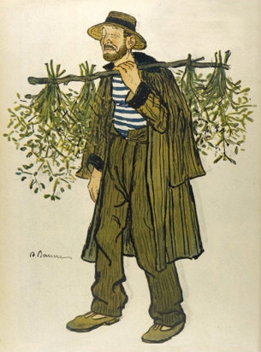 Mistletoe species grow on a wide range of host trees, some of which experience side effects including reduced growth, stunting, and loss of infested outer branches. A heavy infestation may also kill the host plant. Viscum album successfully parasitizes more than 200 tree and shrub species.
Mistletoe species grow on a wide range of host trees, some of which experience side effects including reduced growth, stunting, and loss of infested outer branches. A heavy infestation may also kill the host plant. Viscum album successfully parasitizes more than 200 tree and shrub species.
Mistletoe is the common name for obligate hemiparasitic plants in the order Santalales. They are attached to their host tree or shrub by a structure called the haustorium, through which they extract water and nutrients from the host plant.
The name mistletoe originally referred to the species Viscum album (European mistletoe, of the family Santalaceae in the order Santalales); it is the only species native to the British Isles and much of Europe. A related species with red rather than white fruits, Viscum cruciatum, occurs in Southwest Spain and Southern Portugal, as well as in Morocco in North Africa and in southern Africa. The genus Viscum is not native to North America, but Viscum album was introduced to Northern California in 1900.
Mistletoe
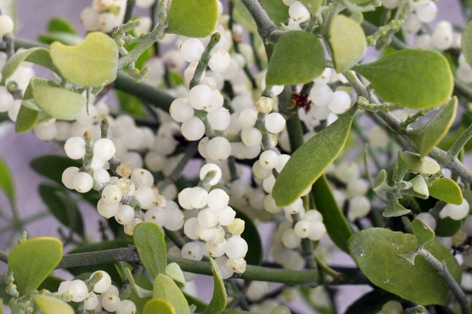 European mistletoe has smooth-edged, oval, evergreen leaves borne in pairs along the woody stem, and waxy, white berries that it bears in clusters of two to six. The eastern mistletoe of North America is similar, but has shorter, broader leaves and longer clusters of 10 or more berries.
European mistletoe has smooth-edged, oval, evergreen leaves borne in pairs along the woody stem, and waxy, white berries that it bears in clusters of two to six. The eastern mistletoe of North America is similar, but has shorter, broader leaves and longer clusters of 10 or more berries.
Over the centuries, the term has been broadened to include many other species of parasitic plants with similar habits, found in other parts of the world, that are classified in different genera and families such as the Misodendraceae of South America and the mainly southern hemisphere tropical Loranthaceae.
The origin of kissing under the mistletoe is shrouded in uncertainty, but it is believed the ancient Greeks celebrated the winter holiday of Kronia-a lively festival and one of the biggest of the year-with mistletoe and may have started the tradition of kissing under it. One of the first descriptions of this tradition comes from a book by Washington Irving published in 1820 ("The mistletoe is still hung up in farmhouses and kitchens at Christmas").
Below: left. Mistletoe in an apple tree and right a beautiful bunch
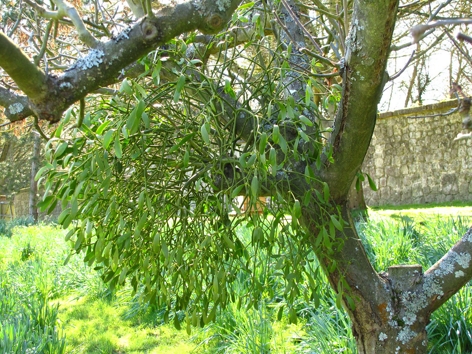
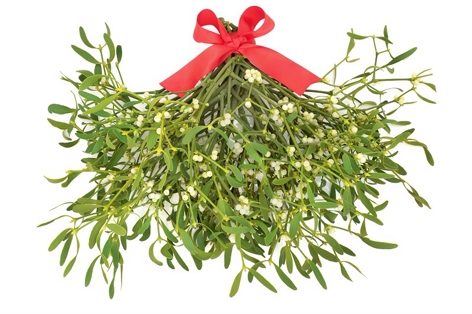
Below: Mummy kissing Santa Claus
 Mistletoe is mentioned in classic Christmas songs like "I Saw Mommy Kissing Santa Claus" by The Jackson 5, "Rockin' Around the Christmas Tree" by Brenda Lee, and Mariah Carey's modern sensation, "All I Want For Christmas is You."
Mistletoe is mentioned in classic Christmas songs like "I Saw Mommy Kissing Santa Claus" by The Jackson 5, "Rockin' Around the Christmas Tree" by Brenda Lee, and Mariah Carey's modern sensation, "All I Want For Christmas is You."
And it can be found in all types of movies, ranging from Christmas staples like "How the Grinch Stole Christmas" to more non-denominational films like the Harry Potter series, and - wait for it - "American Psycho."
So whether it's at a holiday party or in a Christmas movie, there's a good chance you'll see some mistletoe this week. Just don't try to eat it.
Below: Blackbrooks Our local garden centre recently introduced a 'Food Hall' and The EAM is very impressed with the quality and presentation of the produce.
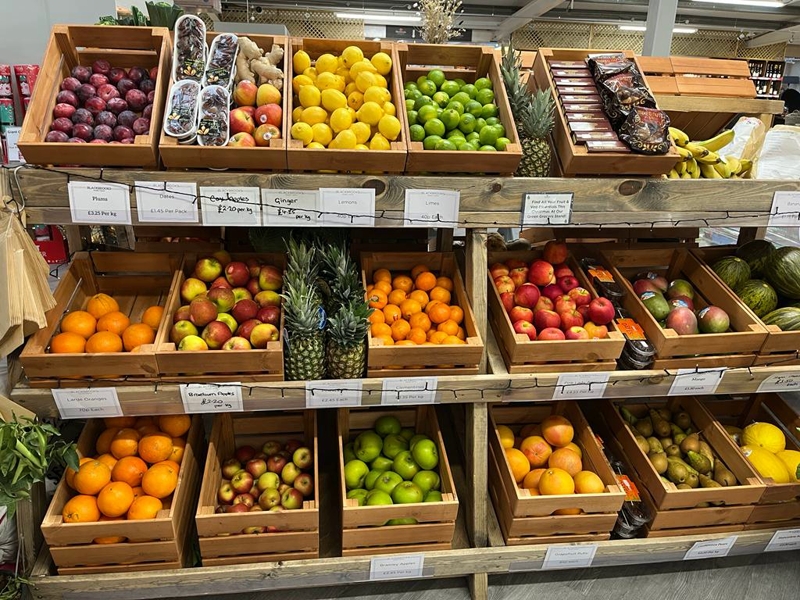
Below: left. Bramley apples at Blackbrooks and right pick of British dessert apples - Jazz bought in Sainsburys.
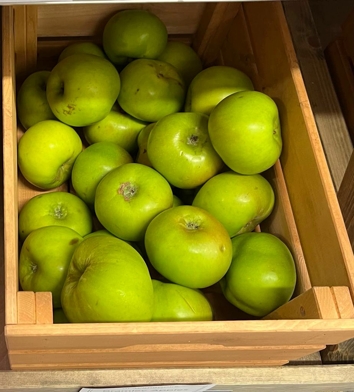
![]() That is all for this week
That is all for this week
The English Apple Man wishes all my readers a Very Happy Christmas
Take care
The English Apple Man